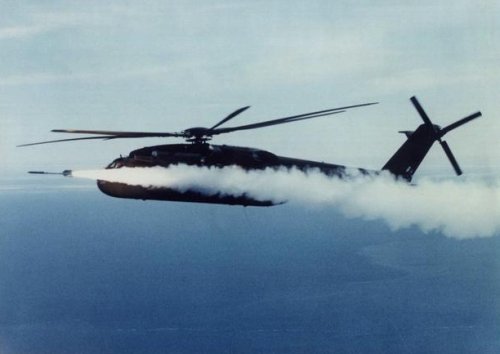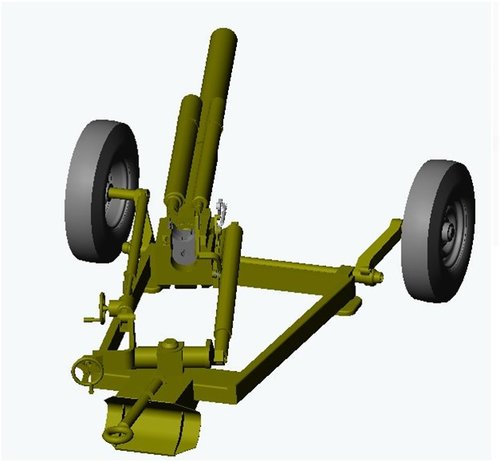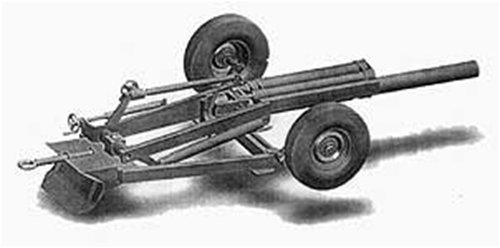G'day gents
Just for something a little different (and out of interest)
As a young 'Westerner' during the
Cold War, I for a long time was mesmerised by the West's technological advancement over that of the Soviet's military equipment. As a young and somewhat gullible kid, I was taken by the perceived argument that
quality over quantity argument!. But it would only be when I was older, read some more literature, with the demise of the Soviet Union - and hence the Warsaw Pact, that I come to appreciate, that the Soviet Military (in my opinion!), probably got a lot of things right in some of its weapons platforms design principles and philosophy.
One of the biggest turn a round's was the reading of the book
The Pentagon Paradox: The Development of the F-18 Hornet, by
James P. Stevenson. Where he depicted that 'if quality over quantity argument was true, then why was it that the German's with the likes of there technically more advanced and higher performance
Messerschmitt Me 262 was unable to prevail and regain air superiority over the numerically superior number of allied fighters like the
P-51 Mustang's, P-47 Thunderbolt's, Spitfire's and Tempest's!
Eventually it would be numbers that would grind-down the Luftwaffe', and hence the German war effort.
So it is that I ask my fellow enthusiasts of everything military to highlight the military platforms of the former Soviet
war machine, which impresses you; has no equivalent in the West; and why you like this weapon/weapons platform!
For me I have always been impressed by the following:
- The BMD Airborne Infantry Fighting Vehicle - This is due to the Soviet's ability to recognise and fully appreciate the vital importance of an airborne forces vulnerability, due to history's combat proven fact that due to lack of mobility and firepower, an airborne assault force is very vulnerable to counter-attack by heavier conventional forces! The fact that this small, compact and light armoured vehicle, with its performance and mobility (including full amphibious capability), along with its fire support (73mm Grom cannon - although sadly low-velocity), anti-armour (with Malyutka or latter Konkurs ATGM) and can be literally can be parachuted into combat and fighting minutes after hitting the ground. Sadly there is no Western equivalent (or want) for such a light and practical combat vehicle.
- The Soviet's ability to adapt and utilise a basic design/chassis as the basis of a vast variety of other weapons platform has never ceased to amaze me! With the only Western equivalent having to be that of the U.S's FMC's M113 chassis! Some of the best examples of this fortitude being that of the PT-76 light tank, which had its basic chassis utilised for the following armoured vehicles - ASU-85 airborne assault gun, 2K12 Kub mobile SAM system, BTR-5O APC, FROG SSM series TEL's, ZSU-24-4 SPAAG, Ob'yekt 914 experimental IFV (lost to Ob'yekt 765 aka BMP-1 IFV design), GPS-55 Amphibious Ferry, PMP Pontoon Bridge system, MT-LB APC/Artillery tractor, 2S1 Gvozdika 122mm SPH. Then there is the likes of the ZIL-135 8x8 and MAZ-543 8x8 heavy high mobility truck series, which has given the Soviet military such outstanding transport capability (weight and size wise), with so much cross-country mobility. The fact that these chassis have been utilised in so many applications and role is staggering in my opinion.
ZIL-135 applications - BM-27 Uragan 220mm MLRS,
- MAZ-543 application - A-222 Bereg 152mm Coastal Artillery system, MAZ-543P/ SS-12 'Scaleboard' MRBM TEL, BM-30 9K50 Smerch 300mm MLRS, S-300 SAM TEL, Mobile Command Post, etc.........
- 2S1 Gvozdika 122mm SPH I'm impressed by this simple, but effective SPH system - not just because it was one of the worlds first auto-loaded SPH, but also for its amazing amphibious capability - which once again is unmatched in the West!!
- MAZ-543 8x8 Transport Erector Launcher (TEL) vehicle design It has always fascinated me, with all the West's automotive, design and building know-how, that the Soviet's were and have been able to develop such a powerful and effective truck system since the mid 1960's. A capability and performance, which has only really been matched since the 1980's by the West. Let alone the Soviet's ability to make their surface-to-surface missiles so mobile!
- M-240 240mm mortar system - serving for some years as a mortarman, I can not but help imagine the power of this weapon in an offensive action (good bye command post and fortifications!). The only better thing than the M-240, would be the 2S4 Tyulpan SP 240mm mortar system!!
- The 9K31 Strela-1 (SA-9 Gaskin) /BRDM-2 short-range, low-altitude self-propelled SAM system, which was cheap, simple and effective. Being deployed around 1968, it is ironic it would take until around the late 1990's-2000, before the United States would field such a simple and effective equivalent - the AN/TWQ-1 Avenger SAM system.
More to follow!!!
Regards
Pioneer



